|
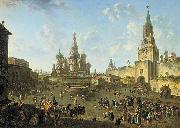 |
Fedor Yakovlevich Alekseev
|
|
Fedor Yakovlevich Alekseev Russian: (c. 1753 - November 23, 1824) was an early Russian painter of landscape art.
After training in the Saint Petersburg Imperial Academy of Arts, he spent three years in Venice studying the works of famous French and Italian landscape painters.
Returning to Saint Petersburg to work, his popularity grew over time. In 1800, Emperor Paul of Russia commissioned a series of paintings of Moscow from him.
|
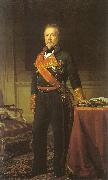 |
Federico de Madrazo y Kuntz
|
|
1815-1894
Spanish
Federico de Madrazo y Kuntz Gallery
Born in Rome, he was the son of the painter Madrazo y Agudo (1781-1859), and received his first instruction from his father. While still attending the classes at the Royal Academy of San Fernando, he painted his first picture, The Resurrection of Christ (1829), which was purchased by Queen Christina. Not long afterwards he painted Achilles in his Tent, and subsequently presented to the Academy The Continence of Scipio, which secured him admission as a member "for merit".
While decorating the palace of Vista Alegre he took up portraiture. In 1852 he went to Paris, where he studied under Franz Winterhalter, and painted portraits of Baron Taylor and Ingres. In 1837 he was commissioned to produce a picture for the gallery at Versailles, and painted "Godfrey de Bouillon proclaimed King of Jerusalem". The artist then went to Rome, where he worked at various subjects, sacred and profane. Then he painted Maria Christina in the Dress of a Nun by the Bedside of Ferdinand III (1843), Queen Isabella, The Duchess of Medina-Coeli, and The Countess de Vilches (1845-1847), besides a number of portraits of the Spanish aristocracy, some of which were sent to the exhibition of 1855.
He received the Legion of Honour in 1846. He was made a corresponding member of the Paris Academy of Fine Arts on 10 December 1853, and in 1873, on the death of Schnorr, the painter, he was chosen foreign member. After his father's death he succeeded him as director of the Museo del Prado and president of the Academy of San Fernando. He originated in Spain the production of art reviews and journals, such as El Artiste, El Renacimiento, and El Semanario pintoresco. He died at Madrid in 1894.
|
 |
David Teniers the Younger
|
|
(December 15, 1610 C April 25, 1690), a Flemish artist born in Antwerp, was the more celebrated son of David Teniers the Elder, almost ranking in celebrity with Rubens and Van Dyck. His son David Teniers III and his grandson David Teniers IV were also painters. His wife Anna nee, Anna Breughel was the daughter of Jan Brueghel the Elder and the granddaughter of Pieter Bruegel the Elder.
Through his father, he was indirectly influenced by Elsheimer and by Rubens. The influence of Adriaen Brouwer can be traced to the outset of his career. There is no evidence, however, that either Rubens or Brouwer interfered in any way with Teniers's education, and Smith (Catalogue Raisonne) may be correct in supposing that the admiration which Brouwer's pictures at one time excited alone suggested to the younger artist his imitation of them. The only trace of personal relations having existed between Teniers and Rubens is the fact that the ward of the latter, Anne Breughel, the daughter of Jan (Velvet) Breughel, married Teniers in 1637.
|
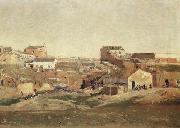 |
Aureliano De Beruete Y Moret
|
|
Spanish , Madrid, 1845 - Madrid, 1912
Spanish writer, painter and collector. After pursuing a political career and taking a doctorate in civil and canon law, he dedicated himself to writing on art and produced important studies on Diego Velezquez (1898), Joaqu'n Sorolla y Bastida (1901) and other artists. He travelled extensively and enthusiastically in Europe (France, Belgium, Switzerland, the Netherlands, Italy, Germany, England and elsewhere), studying especially the different national schools of painting. On his travels he also painted landscapes. After working for some time as a copyist in the Museo del Prado, Beruete decided in 1873 to concentrate his efforts on painting and on learning to perfect his craft. He enrolled at the Escuela Superior de Bellas Artes de S Fernando in Madrid and also studied at the studio of Carlos de Haes. Beruete was among the founders of the Instituci'n Libre de Enseeanza, and with its members, and with Carlos de Haes, he made several study trips abroad. In Paris he came to know the painting of the Barbizon school, and in Belgium he assimilated the teaching of the generation of landscape artists who had adopted a form of Realism. |
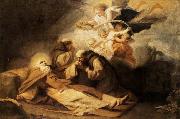 |
Antonio Viladomat y Manalt
|
|
Spanish, 1678-1755,Spanish Catalan painter. He was the most significant figure in Catalan painting from the end of the 17th century to the first half of the 18th. He trained with P. B. Savall and J. B. Perram?n in Barcelona. The arrival of the Archduke Charles (later Charles VI) of Austria in Barcelona in 1703 as a pretender to the throne during the War of the Spanish Succession (1702-13), accompanied by such Italian artists as Ferdinando Galli-Bibiena, acquainted Viladomat y Manalt with artistic trends in Italy. He experienced problems with the artists' guild in Barcelona because of his refusal to participate in the traditional work system. Despite this, his workshop-academy became a centre for the training of numerous painters, sculptors and engravers. Viladomat y Manalt was principally a religious painter, and his oil paintings include Christ Appearing to St Ignatius of Loyola (c. 1711-20; Barcelona, Jesuit Convent) and St Augustine and the Holy Family (Madrid, Prado). He also painted such murals as the tempera Angels with the Sudarium (c. 1727; Matare, S Mar?a, Capilla de los Dolores), but most of the others have disappeared. He painted an extensive series of monastic and evangelical works, in which his revival of compositions characteristic of the Spanish Golden Age is apparent. Examples include the Stigmatization of St Francis (c. 1724; Barcelona, Mus. A. Catalunya), part of a cycle of paintings on the life of St Francis commissioned for the cloister of the convent of S Francisco de As?s in Barcelona. His late Baroque style is related to the severe and realistic trend in Spanish painting in the early 17th century. Some interesting profane allegories by the artist are extant, notably the series Four Seasons (c. 1720-30; Barcelona, Mus. A. Catalunya), which consists of landscapes with genre scenes. Several of the still-lifes by Viladomat y Manalt such as the realistic Still-life with Dead Turkey (Barcelona, Mus. A. Catalunya), which has strong contrasts of light, bear an affinity with Neapolitan painting of the last decades of the 17th century. |
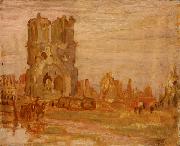 |
Alexander Young Jackson
|
|
(October 3, 1882 - April 5, 1974) was a Canadian painter and a founding member of the Group of Seven.
As a young boy, Jackson worked as an office boy for a lithograph company, after his father abandoned his family of six children. It was at this company that Jackson began his art training. In the evenings, he took classes at Montreal's Monument-National
In 1905, Jackson worked his way to Europe on a cattle boat, returning by the same means and travelling on to Chicago. In Chicago, he joined a commercial art firm and took courses at the Art Institute of Chicago. He saved his earnings and, by 1907, was able to visit France to study Impressionism. In France, Jackson decided to become a professional painter, studying at Paris' Academie Julian under J.P. Laurens.
|
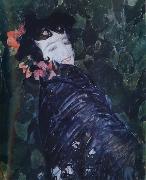 |
Alexander Yakovlevich GOLOVIN
|
|
an important Russian artist and stage designer who designed sets for many productions by Sergei Diaghilev,1863-1930 |
 |
Adolphe Yvon
|
|
Adolphe Yvon (1817-1893) was a French painter known for his paintings from the Napoleonic Wars. Yvon studied under Paul Delaroche, rose to fame during the Second Empire, then finished his career as a teacher.
Shortly after the end of the Crimean War in September 1855, Yvon was commissioned by the French government to paint a large picture of the capture of the Malakoff at Sevastopol. He sailed for the Crimea on February 19, 1856 where he spent six weeks compiling a portfolio of sketches, as well as visiting the battlefield of Inkerman. In 1857, the finished painting La Prise de la tour de Malakoff 8 septembre 1855 was shown at the Paris Salon, and two years later came La Gorge de Malakoff, and La courtine de Malakoff. La Prise was a massive piece measuring 6 metres by 9 metres and represented the moment when the fortification was captured around midday.
In the succeeding years, Emperor Napoleon III began to admire his battle scenes; naturally he glorified the carnage of Napoleon I's campaigns. Yvon became an officer of the Legion d'Honneur in 1867, and painted Napoleon III's portrait the following year (unlocated). Yvon was known as the leading teacher of drawing at the Ecole des Beaux-Arts (1863-83). A few Americans received instruction from him, including Christian Schussele, Alfred Wordsworth Thompson, William Sartain, and J. Alden Weir. The latter took Yvon's afternoon life-drawing class starting in the fall of 1874. Yvon provided the subject for compositional sketches for his students, for example, The Assassination of Julius Caesar, for which he specified how it should be done: Caesar covers his head with his toga. |
|

